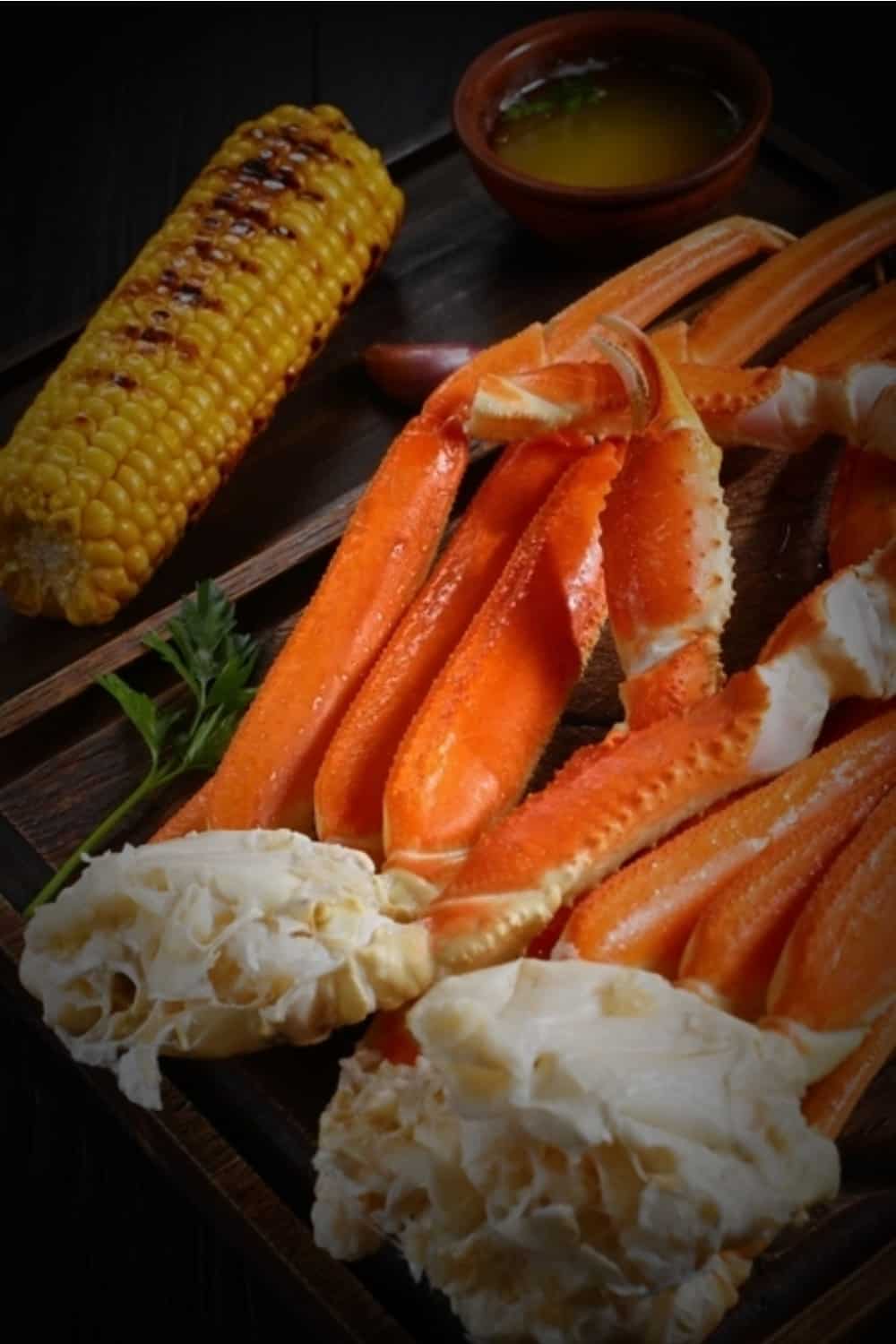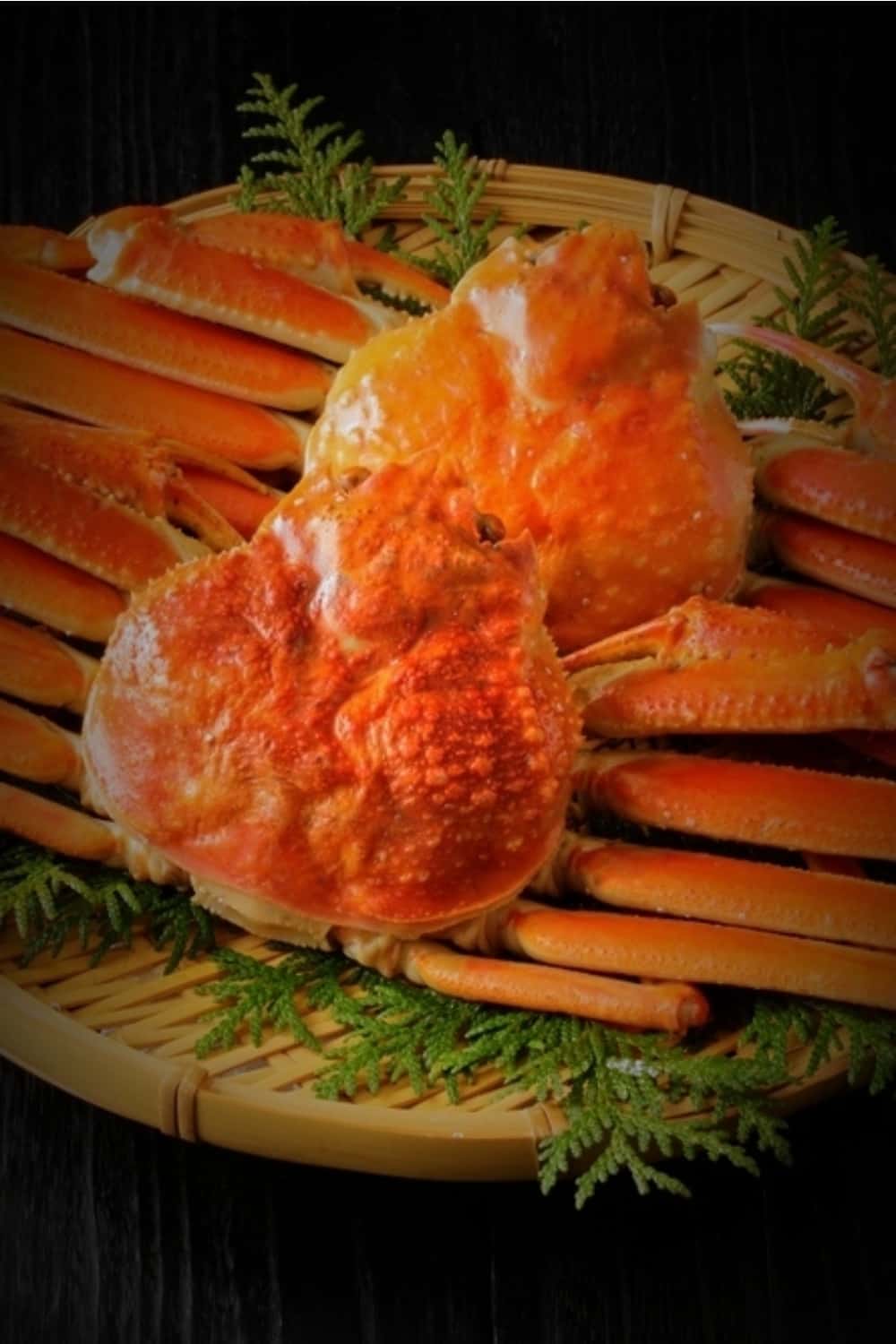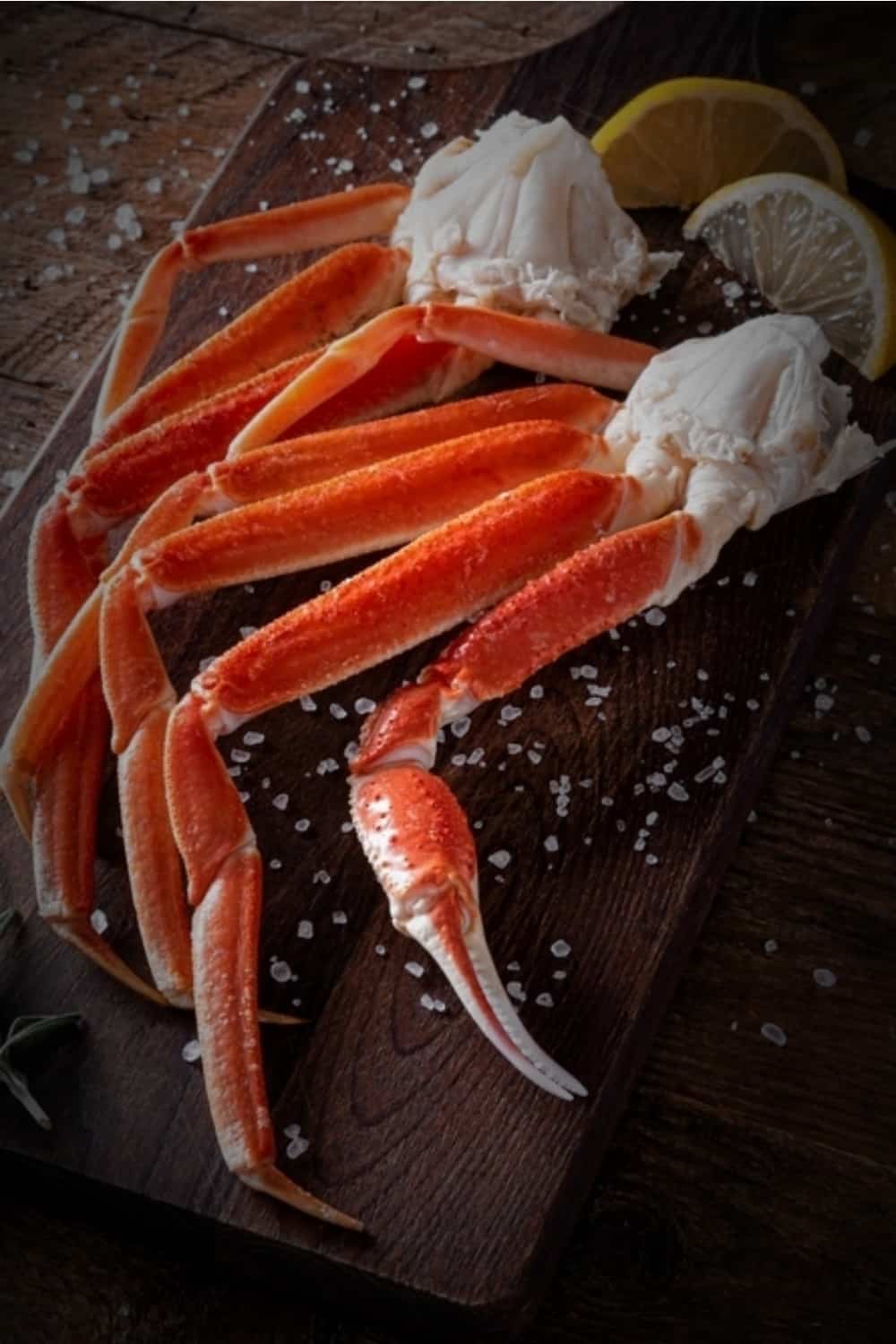Not so many people are into seafood. When I say this, I mostly refer to fish. Fortunately, there are so much more in those deep waters besides fish, and one of the most popular sea creatures is definitely the crab.
Crabs have been a delicacy for many years, and nowadays, people with deeper wallets regularly enjoy them in restaurants, as they’ve become a dish that represents a higher standard.
Among many different types of crabs, two are particularly popular among Americans at restaurants, grocery stores, and fish markets. Those are the snow crab and the Dungeness crab.
Many people have a hard time distinguishing between the two types. However, there are many differences between them, and this article will help you get to know them better.
[table id=34 /]
Snow Crab Vs Dungeness Crab: Overview
Before I head to some of the core differences between them, I will briefly go through some of the basic facts about these two types of crab, starting with snow crab.
Snow Crab
Snow crabs are scientifically known as Chionoecetes opilio. These crabs are commonly found in the cold waters of the northern Atlantic and Pacific oceans.
Snow crabs were first discovered by scientists in the late 19th century. However, since the mid-20th century, they have been commercially harvested. In the early days, the fishing industry primarily targeted larger crab species like the king crab.
As king crab populations declined, the focus shifted to other commercially valuable crab species, including the snow crab.
Nowadays, most snow crab fisheries are in Alaska.
However, in Canada, snow crab fishing has also played a crucial role in the fishing industry, providing employment and economic benefits to coastal communities in provinces like Newfoundland and Labrador, Nova Scotia, and Quebec.
Dungeness Crab
Dungeness crabs are scientifically known as Metacarcinus magister. These crabs are native to the west coast of North America, particularly along the Pacific Ocean.
Dungeness crabs have long been a food source for indigenous communities along the west coast of North America.
Native American tribes in regions such as Alaska, British Columbia, and the Pacific Northwest utilized Dungeness crabs as part of their traditional diet, incorporating them into various dishes and ceremonies.
However, commercial fishing of Dungeness crabs started in the late 19th century and early 20th century.
Initially, Dungeness crabs were primarily harvested by small-scale local fishermen who used traditional fishing methods such as traps and pots. Over time, the fishery expanded, and larger-scale commercial operations emerged.
Snow Crab Vs Dungeness Crab: 9 Main Differences

Differentiating between similarities at first sight can sometimes be quite difficult. This is why I divided the most important differences between these two types of crabs into categories, to make it easier for you.
Maybe they are not as similar as haddock and cod, but some details need to be discussed.
1. Taste
Since this is, after all, a site about cooking, I will start with one of the most important things in the cooking world: taste.
While both types of crabs are delicious, it is important to note that the snow crab has a quite mild taste, especially when compared to the Dungeness crab. It also has a subtle sweet taste with delicate briny notes.
The Dungeness crab, on the other hand, has a richer flavor and is sweeter than snow crab. It also has a slightly nutty taste with hints of buttery sweetness.
Because of the sweeter flavor profile, many people prefer the Dungeness crab over the snow crab.
2. Texture
The texture is also an important part of the overall tasting experience, so it needs to be discussed.
Meat is the part that people eat when enjoying crabs. Snow crab meat has a soft and tender texture with a slightly fibrous quality. The meat flakes easily and has a light, melt-in-your-mouth consistency.
Its texture is somewhat similar to that of shrimp.
Dungeness crab meat is firmer and has a succulent texture. It is also slightly denser compared to snow crab meat, but it has a quite satisfying bite.
3. Cooking Uses

First things first, the majority of meat that comes from the snow crab, actually comes from their legs because that is where the most meat is.
You can steam, boil, or grill snow crab legs and serve them as a standalone entrée, while enjoying them with melted butter or various sauces.
You can also incorporate them into seafood buffets, where the focus is on enjoying the crab legs as a main attraction.
However, this doesn’t mean that you have to toss the rest of the crab in the trash. You can use both legs and body sections in crab clusters.
Crab clusters are often used in recipes that call for crab meat, such as crab cakes, crab bisques, crab salads, or crab-stuffed dishes.
You can also make delicious and healthy Snow Crab Roll. I also have to say that this type of sushi is one of the best sides for sandwiches.
When it comes to Dungeness crabs, they are typically enjoyed as a whole. The entire crab is cracked open, and the meat is extracted from the body and claws and used in various types of dishes.
You can use it in crab cakes, popular seafood stews known as crab cioppino, and Crab Louie salad, as well as in many regional specialties.
4. Nutritional Value
Although they are relatively similar in terms of their nutritional profiles, there are slight differences between the snow crab and the Dungeness crab.
• Calories: Snow crabs are relatively low in calories, i.e., a 3-ounce (85 grams) serving of snow crab provides approximately 100-120 calories.
Dungeness crabs have a slightly higher calorie content, i.e., a 3-ounce serving of Dungeness crab provides approximately 100-130 calories.
• Protein: A 3-ounce serving of snow crab provides approximately 20-25 grams of protein, making it a suitable choice for individuals looking to meet their protein requirements.
Dungeness crabs are slightly lower in protein but still has a decent amount. A 3-ounce serving of Dungeness crab provides approximately 15-20 grams of protein.
• Fat: A 3-ounce serving of snow crab typically contains around 1-2 grams of fat, with minimal saturated fat.
The fat content of the Dungeness crab is slightly higher, as a 3-ounce serving typically contains around 2-4 grams of fat, also with low levels of saturated fat.
• Cholesterol: When it comes to snow crab, there is cholesterol, but in smaller amounts compared to other varieties. A 3-ounce serving of snow crab typically provides around 40-60 milligrams of cholesterol.
Dungeness crab is a bit higher in cholesterol content, i.e., a 3-ounce serving of Dungeness crab typically provides around 70-100 milligrams of cholesterol.
• Vitamins and Minerals: Snow crabs are high in vitamin B12, phosphorus, selenium, zinc, and copper.
Dungeness crabs are a good source of vitamins B12, B6, riboflavin, niacin, copper, zinc, magnesium, phosphorus, and selenium.
5. Size and Weight
Looking at the body alone, Dungeness crabs are bigger in size than snow crabs. Their body grows 8-10 inches long on average, while the body of a snow crab is no larger than 6-8 inches.
However, snow crabs have a higher weight, i.e. they weigh 3-4 pounds on average, while Dungeness crabs weigh 2-3 pounds.
But, how is that possible? Remember when I said that the majority of snow crab meat comes from legs? Well, snow crabs have longer legs, and those legs alongside the meat contribute to their higher weight, so there is a catch.
6. Appearance

You now know that the snow crab is smaller than the Dungeness crab, but has longer legs. In most cases, this fact alone is enough to differentiate the two.
But there are also their colors. Namely, Dungeness crabs, from the day of their birth to their last day, remain rusty orange in color. Aside from that, they can have purple colorations.
Snow crabs, on the other hand, retain an orange or red color only when they are young. When you see older snow crabs, you will also see olive sheen or darker spots.
However, you shouldn’t be worried if you are planning on eating them, since this is actually a sign of a good and tasty crab.
I also have to mention their shells. Snow crabs have much thinner shells that can be easily opened by hand.
When you want to eat Dungeness crabs, you need specialized tools to crack their shells because they have much harder and thicker shells than snow crabs.
You will probably need crab claw clamps to crack them open without hurting yourself.
7. Behavior
Both crab varieties have similar behaviors. They are both solitary creatures that only come together during the season of breeding.
However, the process of breeding is slightly different. For Dungeness crabs, that process begins in late spring and summer. During this period, females are molting, and males are still in their hard shell.
Dungeness crabs also molt frequently in a single year. Snow crabs, on the other hand, molt during their adolescence and less into their adulthood. They also tend to enjoy much colder temperatures, compared to Dungeness crabs.
8. Harvest Season

Snow crabs and Dungeness crabs have different harvest seasons, although the exact time of harvest may vary depending on their respective geographical ranges and regulatory measures implemented by fisheries management.
In short, snow crab is in season from April to the beginning of November. They are primarily harvested in colder northern waters, such as the Bering Sea and the Gulf of St. Lawrence, and they are often associated with Arctic and subarctic regions.
On the other hand, you can find Dungeness crabs throughout the year. Aside from that, they can be found in various locations, including Alaska, Oregon, Canada, and Washington.
This means that they are much more available when compared with snow crabs.
9. Price
Snow crabs are not available all year round and are harvested only in cold northern waters, so it is not hard to conclude that their price is also slightly higher.
According to SeafoodSource, in January 2023, snow crab prices in the US market were USD 7.50. That is actually a significant fall in price, compared to USD 19.00 per pound in January last year.
When it comes to the Dungeness crab, their price may vary, but, in general, it is estimated at between USD 4.13 and USD 7.62 per pound. That is also a significant fall in price, compared to 2023.

